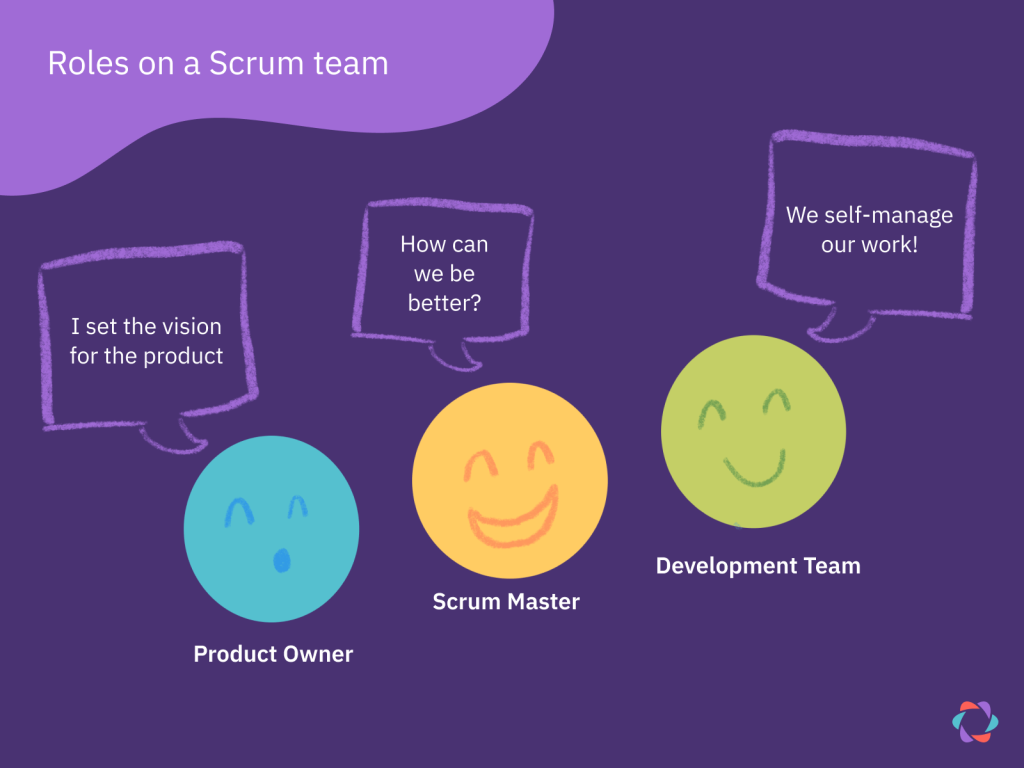What Is a Scrum Team?

Agile methodologies have gained widespread recognition for their ability to enhance productivity, collaboration, and product quality. Scrum – the most popular framework used by 81% of agile teams – has a specific team structure made up of three core roles.
In this article, we will delve into what a Scrum team is, its key components, and its role in the Scrum framework.
Understanding Scrum
Scrum is a lightweight agile framework that helps teams build products and ship them faster. Scrum adopts an iterative and incremental approach to work, which is split into short sprints. Each working sprint has a sprint goal, and ends with a retrospective, a meeting in which teams reflect on what went well and what didn’t go well.
Scrum was originally designed for software development but has since been adapted for various industries. At its core, Scrum emphasizes empiricism, collaboration, transparency, and adaptability to achieve project success.
📌 Further reading: Scrum 101: The Complete Beginners Guide to Scrum
What is a Scrum Team?
A Scrum team is a small, cross-functional group of 10 or fewer individuals who work together in sprints to deliver a potentially shippable product increment by the end of each sprint, which is a time-boxed development iteration in Scrum. The Scrum team is responsible for transforming customer needs into valuable, working software.
Scrum teams are made up of:
- Developers: The development team, often referred to simply as “developers” consists of professionals who possess the skills necessary to design, develop, test, and deliver a product increment. These individuals work collaboratively to meet the sprint goal. In Scrum, there are no specialized roles like testers or analysts; each team member is expected to contribute in various ways to achieve the sprint objective. Although the name “developer” implies a software developer, it is not unusual to see designers, marketers, or UX folks working in a Scrum team. There are typically 3-8 developers on a Scrum team.
- Product Owner: The product owner represents the voice of the customer in the Scrum team and is responsible for maintaining and refining the product backlog, prioritizing user stories, and making decisions about what to build next. The product owner works closely with the developers to ensure that the highest value features are built. There is typically 1 Product Owner on a Scrum team.
- Scrum Master: The Scrum master is a servant-leader who supports the Scrum team and coaches them to better follow Scrum principles and practices. Their primary accountabilities include removing impediments, facilitating Scrum events, and coaching the team to improve its processes and efficiency. The Scrum master helps fosters a culture of continuous improvement, which is a core element of Scrum. There is typically 1 Scrum Master on a Scrum team.

Collaboration within a Scrum Team
Scrum team members work closely together and communicate daily during the Daily Scrum to ensure alignment and progress toward the sprint goal. The Scrum team self-organizes, meaning they have the autonomy to decide how to best accomplish their work. This autonomy promotes creativity and innovation while fostering a sense of ownership and accountability among team members. Scrum teams are bound by the 5 Scrum values of Commitment, Focus, Openness, Respect, and Courage.
Scrum team accountabilities
Each member of the Scrum team has a distinct role and accountabilities:
- Developers: Scrum team developers are accountable for delivering a potentially shippable product increment by the end of each sprint. They decide how to best achieve this goal and are accountable for the quality of their work.
- Product Owner: The Product Owner is accountable for maximizing the value of the product by managing the product backlog and making decisions about its content. They are also available to answer questions and provide clarifications to the development team during the sprint.
- Scrum Master: The Scrum Master serves the Scrum team, organization, and product owner by coaching and facilitating Scrum practices. They ensure that the team follows the Scrum framework and continuously looks for ways to improve.
Forming your own Scrum team
Scrum teams are unique because they are multi-disciplinary. This means that unlike in siloed organizations with different departments they can move fast because they have all the skills they need on one small team. If you want to get started with Scrum, check out Parabol’s Scrum beginners guide. When you form your team we recommend kicking things off with a team charter discussion so you can discuss your team’s values and everyone can gain clarity on their accountabilities and the purpose of your Scrum team.









